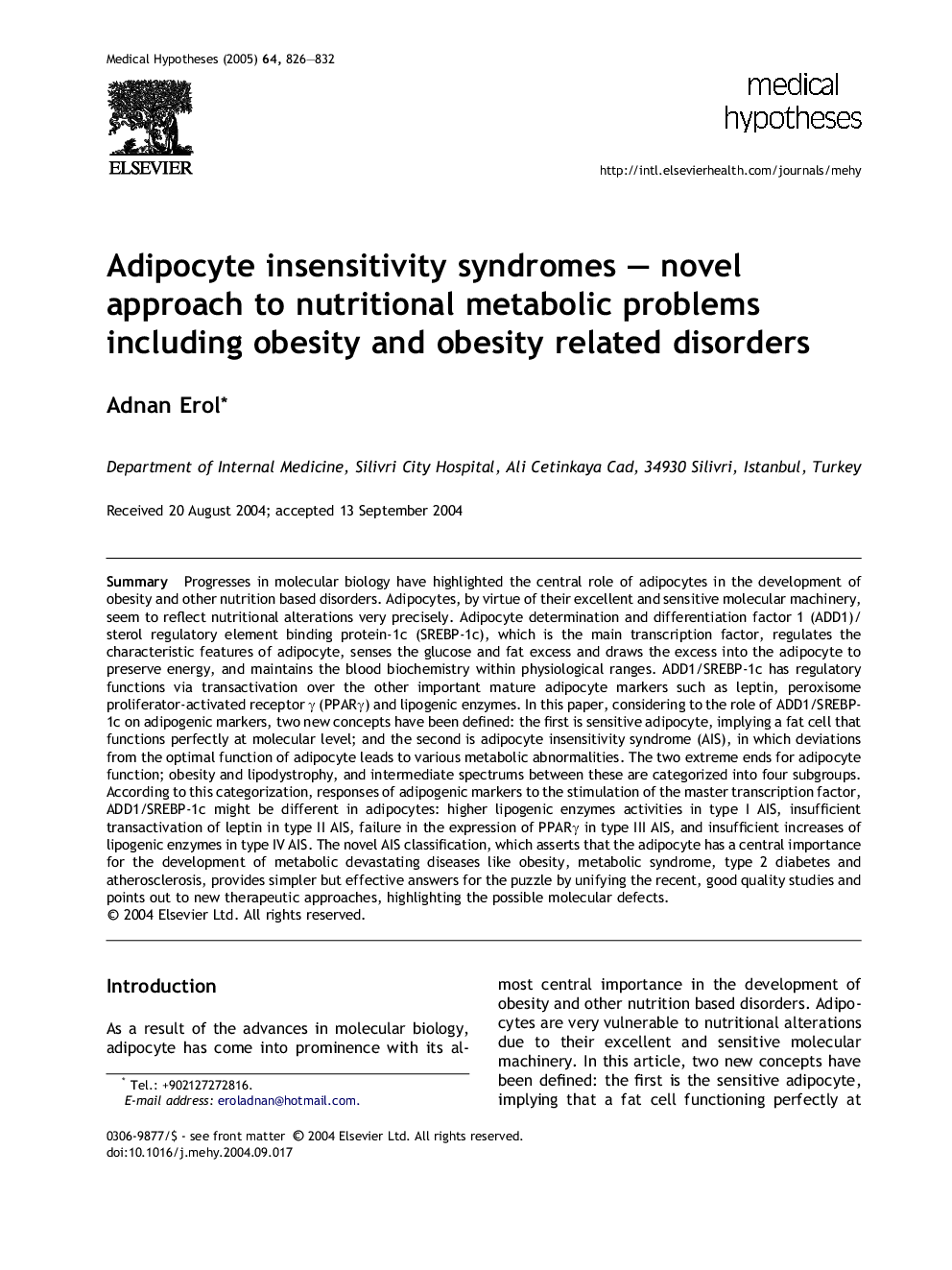| Article ID | Journal | Published Year | Pages | File Type |
|---|---|---|---|---|
| 8995806 | Medical Hypotheses | 2005 | 7 Pages |
Abstract
Progresses in molecular biology have highlighted the central role of adipocytes in the development of obesity and other nutrition based disorders. Adipocytes, by virtue of their excellent and sensitive molecular machinery, seem to reflect nutritional alterations very precisely. Adipocyte determination and differentiation factor 1 (ADD1)/sterol regulatory element binding protein-1c (SREBP-1c), which is the main transcription factor, regulates the characteristic features of adipocyte, senses the glucose and fat excess and draws the excess into the adipocyte to preserve energy, and maintains the blood biochemistry within physiological ranges. ADD1/SREBP-1c has regulatory functions via transactivation over the other important mature adipocyte markers such as leptin, peroxisome proliferator-activated receptor γ (PPARγ) and lipogenic enzymes. In this paper, considering to the role of ADD1/SREBP-1c on adipogenic markers, two new concepts have been defined: the first is sensitive adipocyte, implying a fat cell that functions perfectly at molecular level; and the second is adipocyte insensitivity syndrome (AIS), in which deviations from the optimal function of adipocyte leads to various metabolic abnormalities. The two extreme ends for adipocyte function; obesity and lipodystrophy, and intermediate spectrums between these are categorized into four subgroups. According to this categorization, responses of adipogenic markers to the stimulation of the master transcription factor, ADD1/SREBP-1c might be different in adipocytes: higher lipogenic enzymes activities in type I AIS, insufficient transactivation of leptin in type II AIS, failure in the expression of PPARγ in type III AIS, and insufficient increases of lipogenic enzymes in type IV AIS. The novel AIS classification, which asserts that the adipocyte has a central importance for the development of metabolic devastating diseases like obesity, metabolic syndrome, type 2 diabetes and atherosclerosis, provides simpler but effective answers for the puzzle by unifying the recent, good quality studies and points out to new therapeutic approaches, highlighting the possible molecular defects.
Related Topics
Life Sciences
Biochemistry, Genetics and Molecular Biology
Developmental Biology
Authors
Adnan Erol,
